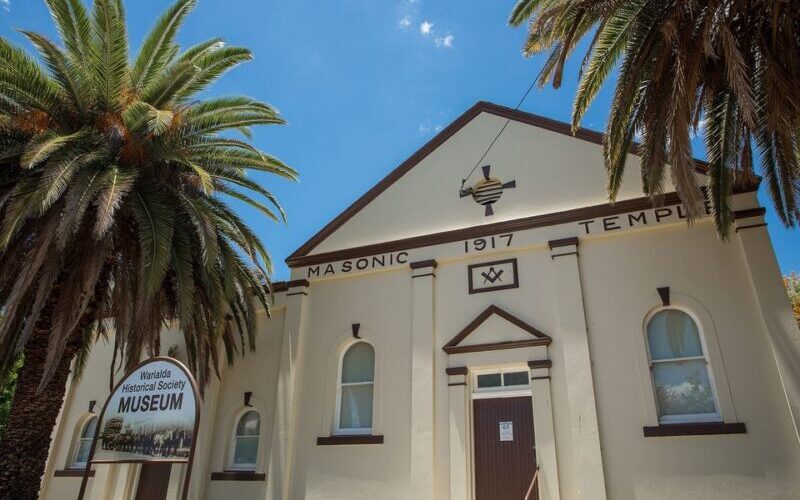Cunningham’s Track
In 1827, the botanist Allan Cunningham made a trip from Segenhoe (near Sydney) seeking an overland route to Brisbane. He passed through the Gwydir Shire twice, going north and taking a different route on his return. Unlike later explorers whose published accounts guided settlers seeking good land, Cunningham’s account is short of detail; today he is best known for the many species of plant that bear the name ‘Cunninghamae’, and for naming – amongst others – the rivers Gwydir, Dumaresq, McIntyre and Horton, the Drummond Range and Stoddart’s Valley.
Peter McIntyre had guided him through the ranges, Stoddart was an ‘intelligent’ officer, Horton a secretary of state, and Drummond was the surname of the influential Lord Gwydir. Cunningham’s Gap, west of Brisbane, is named for the explorer himself.
Cunningham and his party camped at the site of present day Bingara, where they saw signs of cattle, and near Warialda found a structure clearly built by white men, whom they assumed to be escaped convict cedar cutters, in company with Aboriginal people. Although the building has long since disappeared, it was in the Stonehenge State Forest, about 5km east of the present town.
On the outward leg he travelled slightly northwest from Warialda, and passed near present-day Coolatai. Returning, he rode from Inverell, past Delungra, joined the Reedy Creek and followed it via Cranky Rock to its confluence with the Gwydir (which he muddled with the Peel). He crossed the Gwydir, turned east and climbed high into the Horton Valley before leaving the Shire across the Nandewar Range.
Having been the first white man to officially see the Weraerai, and probably the first man to fire a gun on the Gwydir when he killed a blue cheeked honey eater, Cunningham died in Sydney on 28 June 1839, a year and eighteen days after the Myall Creek Massacre.
Throughout the Gwydir Shire signs indicate where Cunningham’s track crosses modern roads. Further information is available from the Bingara and Warialda Visitor Information Centre.










